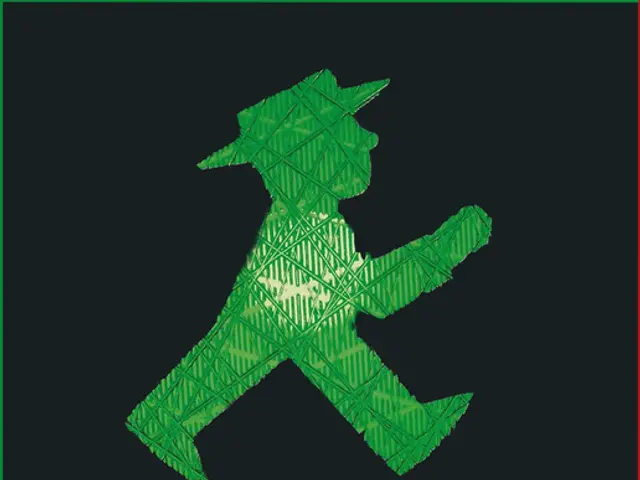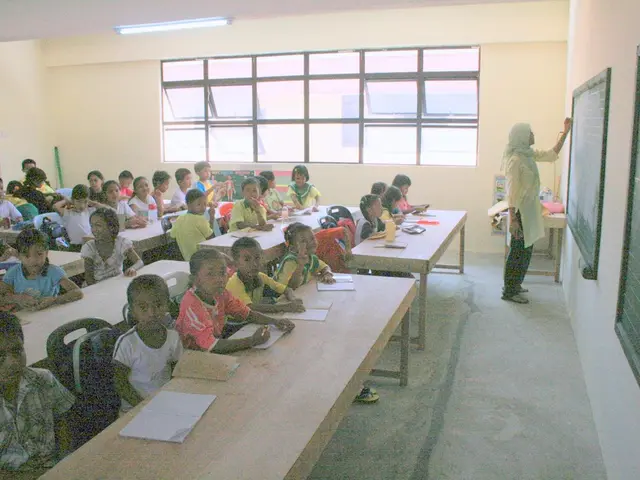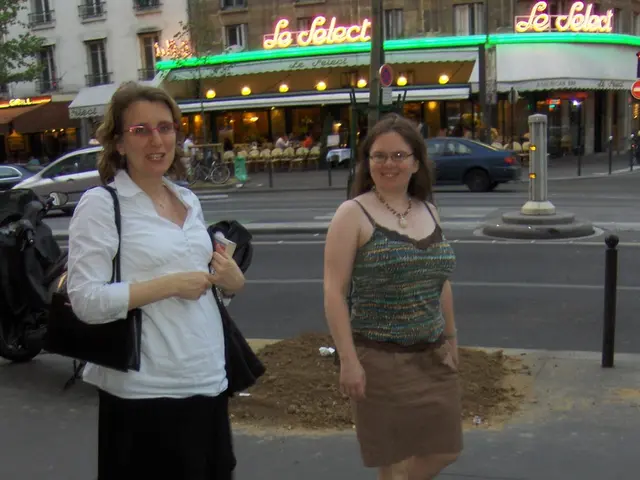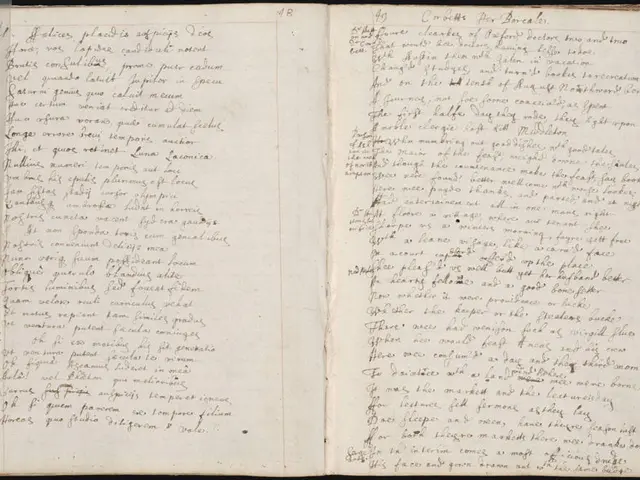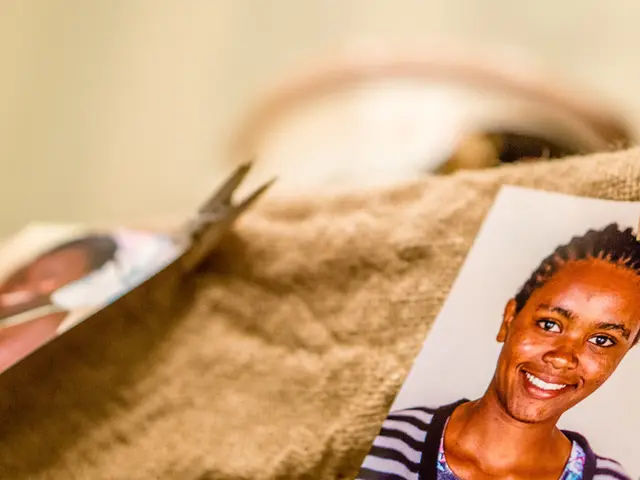Khmer communities revitalize and thrive in the Southern region, demonstrating growth from their origins.
Rewritten Piece:
SOUTHERN VIETNAM - Springtime heralds not only the flourishing of nature but also the commemoration of significant historical milestones for the nation. For the Khmer people in the provinces of Bạc Liêu, Trà Vinh, and SócTrăng, this is more than a mere reminder — it's a chance to reflect on the incredible transformation of their homeland.
Fifty years post-reunification, what were once remote Khmer hamlets have been diamonds that have shot up from the mud, showcasing the promise of a prosperous future.
A Glimpse of Progress and Prosperity
The Sa Đam drum dance is a traditional cultural highlight of the Southern Khmer people. Photo nhandan.vn
Stepping into these once-underdeveloped areas now reveals bustling communities that buzz with the élan of growth and development. The journey of the Khmer people mirrors the larger story of Vietnam's progress, a tale of resilient communities, thoughtful policymaking, and visionary leadership.
In Bạc Liêu alone, over 17,000 Khmer households make up 7.6% of the population. In Trà Vinh and SócTrăng, the Khmer communities account for over 30%, forming a rich cultural tapestry within these regions.
Recognizing the power of unity and the importance of development for all, local governments have prioritized inclusive growth as both a moral and strategic approach.
According to Phạm Văn Thiều, chairman of the Bạc Liêu People's Committee, the province has steadily implemented policies designed specifically for ethnic minorities— policies that align with broader socio-economic goals. This focus has had a tangible impact on the lives of the Khmer people.
Ngo boat racing is the highlight of the Southern Khmer people's Cultural, Sports, and Tourism Festival. Photo nhandan.vn
Roads, schools, healthcare centers, and cultural institutions have all been expanded and modernized.
Government Support Meets Local Determination
From 2021 to 2024, Bạc Liêu allocated VNĐ160 billion (US$6.3 million) towards the National Target Program for Sustainable Poverty Reduction.[1] This funding has supported a diverse range of livelihood initiatives and enhanced agricultural practices, resulting in a 20% increase in the average income of Khmer rice farming households compared to 2021.[1]
The poverty rate among ethnic minority households has also dropped significantly, from over 2,000 households in 2021 to only 258 today, representing just 1.39% of the Khmer population.
The Khmer people joyfully celebrate the traditional Chôl Chnăm Thmây Festival amid the spirit of renewal. Photo baodantoc.vn
Trà Vinh, SócTrăng, and other provinces have implemented similar programs, including microcredit initiatives, vocational training, and support for traditional crafts.
In infrastructure development, paved roads, stable electricity, clean water, and well-equipped schools are now common sights in Khmer villages. In Bạc Liêu, thirteen out of fourteen communes with significant Khmer populations have now met all criteria for New Rural Status.[1]
Progress in Every Corner
In village after village, the changes are unmistakable. Concrete roads now replace muddy trails, electricity brightens homes that were once shrouded in darkness, and basic infrastructure is no longer a distant dream for thousands of Khmer families.
Moon Worship Ceremony is another cultural highlight of the Southern Khmer people. Photo baodantoc.vn
Danh Cáo, a resident of Kos Thum Hamlet in Ninh Thạnh Lợi commune in Bạc Liêu, recalls the hardships of the past: "We used to travel by canoe; getting to school or medical care was tough. Now, with electricity, roads, schools, and clinics in place, life has changed for the better."
In Trà Vinh's Cầu Ngang district, where a high percentage of Khmer people reside, new schools have been built near temples to facilitate both secular and religious education.[2]
In SócTrăng, local Khmer farmers are integrating modern techniques in shrimp farming and rice cultivation, ensuring productivity while preserving traditional knowledge.[4]
Culture, Preserved and Strengthened
The traditional culture of the Khmer ethnic community is being preserved and promoted via many festival, including the Chôl Chnăm Thmây Festival. Photo baodantoc.vn
Hand in hand with economic development, cultural preservation has been a significant focus. Programs promoting Khmer traditions, through festivals, temples, language, and education, are helping maintain a strong sense of identity within the community.
Pagodas remain spiritual and cultural centers, where tradition and modernity harmoniously converge.
Venerable Tăng Sa Vong, vice president of the provincial Association for Patriotic Monks and Abbot of Buppharam Pagoda in Cái Giá Chót, Bạc Liêu, expressed his joy at the province's achievements: "Under the leadership of the Party and State, our lives have improved in every way—from politics to economy to culture."
In SócTrăng and Trà Vinh, monasteries play a crucial role in community organization, education, and charity. Local monks are active in promoting environmental awareness, youth education, and social harmony. [4]
The government's policies on religious freedom and ethnic equality have empowered these institutions to become full partners in regional development. Support for cultural institutions and Khmer education is another facet of the inclusive approach. [4]
A New Day Dawns for the Khmer Villages
Returning to Khmer villages today, one can easily see the sweeping changes. In Ninh Thạnh Lợi in Bạc Liêu, Cầu Kè in Trà Vinh, and Mỹ Tú in SócTrăng, once symbols of war, poverty, and isolation, the scene is now one of vibrant communities with strong foundations for the future.
Formerly wild marshlands are now productive rice fields and shrimp farms.
Concrete roads stretch through what were once impassable paths.
Bright, spacious schools and ornately renovated pagodas add to the beauty and functionality of the landscape.
Families no longer need to send their children far for education. Basic healthcare is accessible. Cultural events are celebrated with renewed vigor and participation.
The Khmer community has embraced innovation in agriculture, small business, and education. More and more young people are pursuing higher education, returning to their roots with knowledge to share and contribute to the community's growth. [4]
Women are stepping into leadership roles, actively shaping the economic and social development of their villages.
Marching Forward with Hope
Today, the Khmer communities in Bạc Liêu, Trà Vinh, and SócTrăng stand as symbols of resilience, unity, and faith in the nation's path. Their journey from hardship to hope is a testament to the effectiveness of inclusive development policies and the strength of grassroots efforts.[1]
What once were war-torn, poverty-stricken villages are now vibrant communities with strong foundations for the future. Fifty years after the Liberation of the South, the Khmer people continue to walk alongside the nation, confident in the Party's leadership, contributing with heart and hands to the building of a prosperous, civilized, and culturally rich Vietnam. [3]
Their story is not just about overcoming adversity, it's about shaping a future in which tradition and progress go hand in hand. In the blooming rice fields, the laughter of children, and the chanting from temples, the spirit of a homeland renewed is vividly alive. [3] The journey of the Khmer communities of Southern Vietnam offers a powerful example of what can be achieved when inclusive policies meet determination and unity. [1] With continued support and their own unwavering efforts, the Khmer communities of Southern Vietnam will keep writing new chapters of growth, harmony, and hope. [3]
References:[1] Viet Nam News (2023). "Khmer communities blossom in once-isolated regions of Southern Vietnam."[2] Baodantoc.vn (2023). "Khmer Traditional Festivals Preserve and Promote Their Cultural Heritage."[3] Nhandan.vn (2023). "A Glimpse into the Progress and Prosperity of Vietnam's Southern Khmer Communities."[4] Save Khmer Times (2023). "Advancing Together: The Development of Vietnam's Southern Khmer Communities."
- In the vibrant Khmer communities of Bać Lieu, Tra Vinh, and SocTrang, the spirit of renewal and prosperity is palpable.
- Traditional customs such as the Sa Dam drum dance are now celebrated against the backdrop of modern development.
- Government-led economic policies have garnered significant results, leading to a 20% increase in average income for Khmer rice farming households.
- Recognizing the need for inclusive growth, local authorities have prioritized policies above and beyond ethnic minority needs, aligning with broader socio-economic goals.
- A highlight in Tra Vinh is the construction of new schools near temples, simultaneous in secular and religious education.
- In SocTrang, agricultural practices have been modernized, showcasing traditional wisdom and ensuring sustainability.
- Cultural preservation is at the forefront of development, with festivals, temples, language, and education programs promoting Khmer traditions.
- Pagodas have become an essential blend of tradition and modernity, serving as spiritual and cultural centers in Khmer communities.
- The government's policies on religious freedom and ethnic equality have empowered institutes to contribute to regional development.
- Infrastructure has significantly improved in Khmer villages, with paved roads, stable electricity, clean water, and well-equipped schools becoming common sights.
- New Rural Status has been achieved by most Khmer communities, symbolizing the progress made in just a few short decades.
- Innovation driven by the younger generation has played a substantial role in changing traditional farming methods and implementing small businesses.
- Women have emerged as vital decision-makers, shaping economic and social development in their communities.
- The Khmer communities continue to uphold faith in the Party's leadership and strive for a prosperous, civilized, and culturally rich Vietnam.
- The Khmer communities are a beacon of resilience, unity, and hope, embodying the potential for steady growth and a harmonious future.






